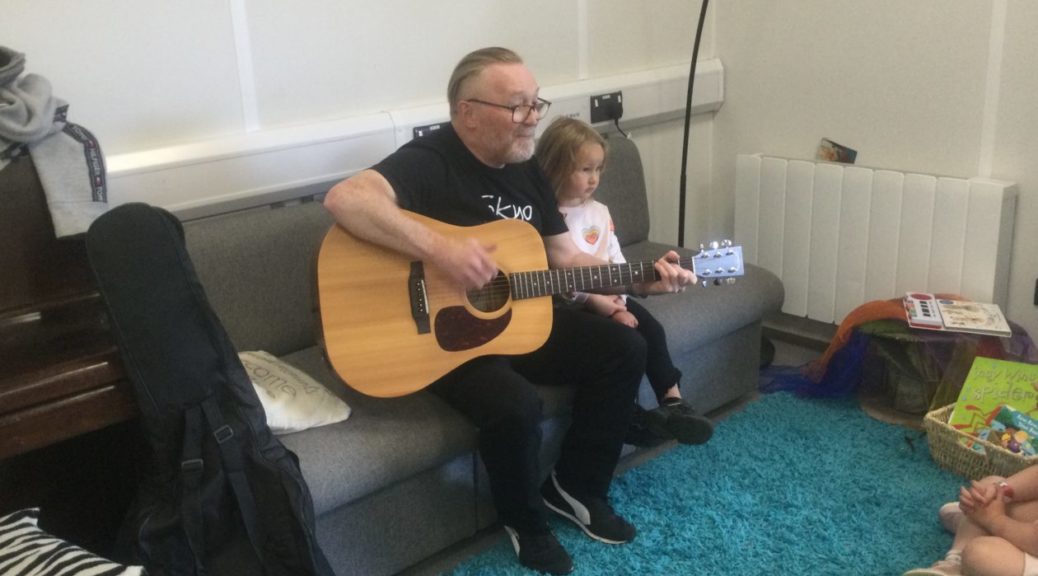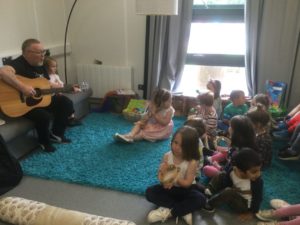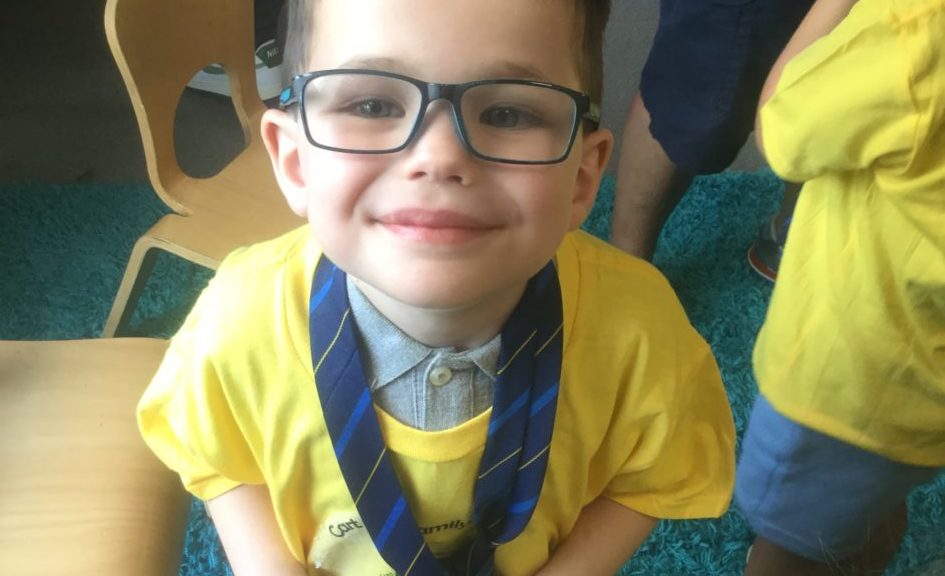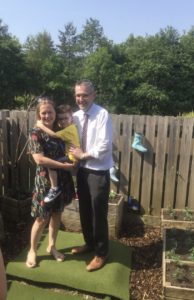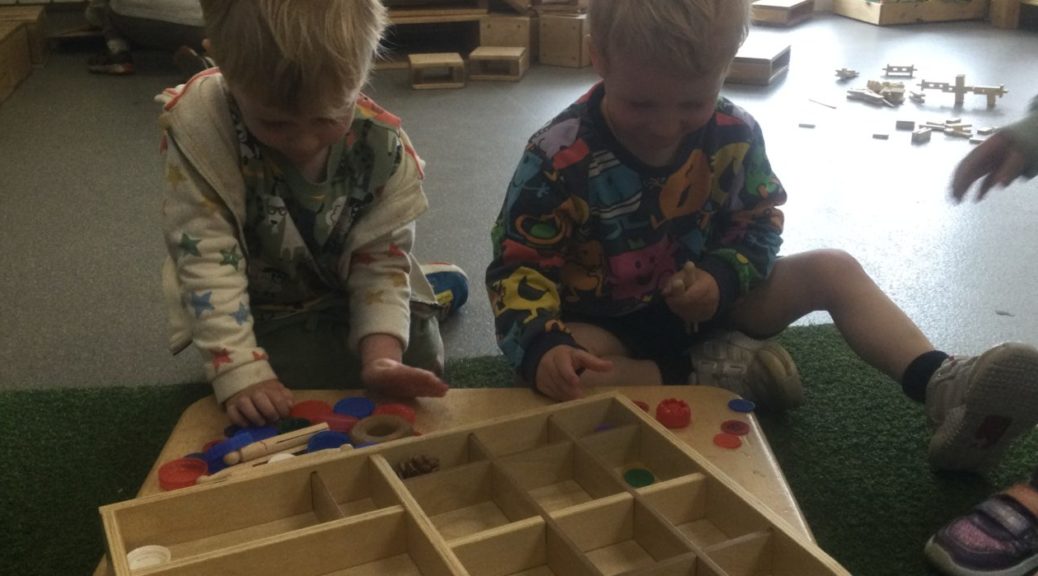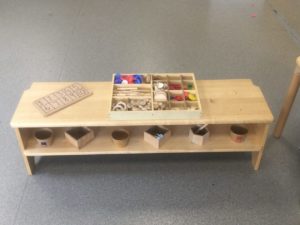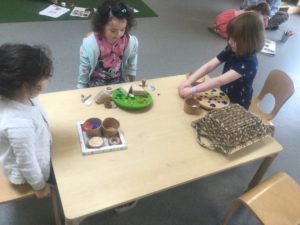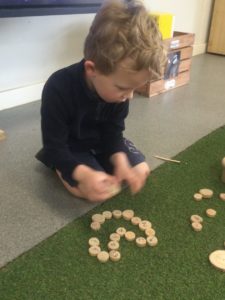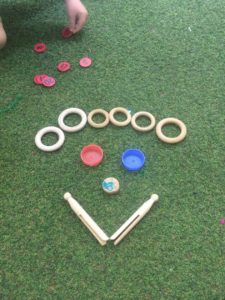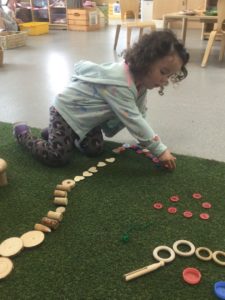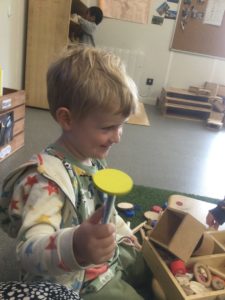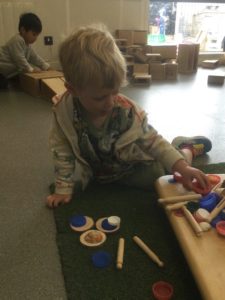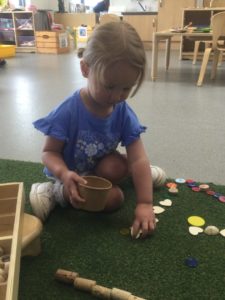Today at Cart Mill we had a very special visitor. We had Grandpa Tommy who came along with his guitar to sing songs with our children.

We sang lots of songs such as Twinkle, twinkle, 5 little ducks, 1,2,3,4,5, Baby shark and lots more. He even took requests we had Yellow submarine and How much is that doggy in the window.
We all joined in and sang along. We even remembered all the actions to our songs.
At the end of our singing session we each choose and instrument to play and chose twinkle twinkle again as our last song.

Singing is a great way for our children to engage with music and learn lots new skills and vocabulary.
A huge thank you to Grandpa Tommy for coming in as part of our intergenerational project.
We have another mummy who is coming in to play piano and sing with us. We are very excited about this.
My name is Emma and as part of my Froebel in Childhood Practice course I’ve been set a challenge to promote a Froebelian approach within Cart Mill.
My project is “a Froebel Approach to intergenerational links within the community.” As part of my project we will be reconnecting the link with Bonnyton house in the next few weeks to share stories etc with the older generation and continue our links with Williamwood High School after the summer.
We would love to invite any parents/carers/grandparents to come in to take part in any sessions or show case any talents within our nursery children. Are you good at baking? gardening? arts? Or can you spare half an hour to read a story with us? Thank you in advance and look forward to welcoming you in.

